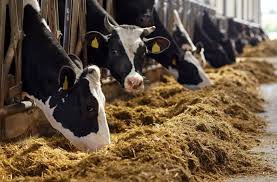Various types of feed ingredients, or feedstuffs, are available to meet the nutritional needs of livestock. These feedstuffs are raw materials that are transformed into animal cells, tissues, organs, and products.
Familiarity with the chemical and nutritional composition of the different classes of feedstuffs is essential for formulating cost-effective and profitable rations.
Understanding the various feedstuff types is crucial for planning planting, harvesting, and storage of homegrown feedstuffs. Proper preservation of stored feedstuffs is a critical factor for profitability, especially for certain types of farms and ranches.
Feed refers to any edible material consumed by animals that contributes energy and/or nutrients to their diet. According to AAFCO (2000), this term usually applies to animals rather than humans.
Concentrates are feeds containing a high density of nutrients and are typically low in crude fiber content (less than 18% of dry matter) and high in total digestible nutrients.
Concentrates can be high in energy (energy concentrates), such as cereals and milling by-products, or high in protein, containing over 20% crude protein, known as protein concentrates.
These may be fed in raw or milled forms as individual feeds (sometimes referred to as straights) or blended into balanced rations for specific production purposes (compound feeds).
Read Also: Poodle Dog Breed: Description, Health, Origin and More
Concentrates Feeds
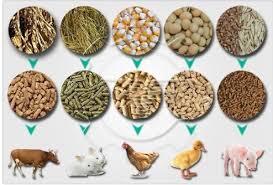
Compound feeds may be mixed on-farm or produced by the commercial feed compounding industry. Published data on compound feeds mainly refer to those from the latter.
A. Raw Materials for Concentrate Feeds
Raw materials for concentrate feeds are commonly classified into the following categories:
1. Cereals: The main cereals include rice, wheat, barley, oats, rye, maize, sorghum, and millet.
2. Grains: All cereals except rice.
3. Coarse grains: All cereals except wheat and rice.
4. Food grains: Grains used for human food consumption.
5. Feed grains: Unmilled grains used as livestock feed.
6. Milling by-products: By-products from the milling of cereals and pulses, such as brans and pollards.
7. Feed-grain substitutes: Dried roots and tubers (mainly cassava and sweet potatoes) or by-products of crop processing, such as molasses, maize gluten feed, distillery and brewery grains, dried citrus pulp, etc. Some classifications consider ‘roots and tubers’ as a separate category, while others may classify these as ‘non-conventional concentrates’.
8. Oil meals and cakes: Products from oilseeds (including copra, cotton seed, groundnuts, linseed, palm kernel, rapeseed, sunflower seed, and soybeans) and fish after oil extraction using expeller methods (oil cakes) or solvent extraction methods (oil meals).
9. Other concentrates: Other energy or protein concentrates, including processed livestock products (inedible fats and oils, meat, blood, bone meal, and milk products), as well as industrial products such as urea and single-cell protein.
10. Non-conventional feeds and processed harvested forages: These include feeds not widely used in commercial livestock diets. Some may be considered concentrate feeds after processing, such as dried lucerne (alfalfa) leaf meal, dried cassava leaf, cassava pulp, processed pea and bean meals, sal and rubber seed meals, citrus pulp wastes, and others.
B. Energy Concentrates (Grains and By-Product Feeds)
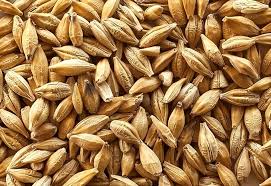
The main nutrient contribution of grains and by-product feeds is energy. Oats and barley are moderately high in crude protein (CP). Processing grains (rolling, crimping, cracking, or grinding) increases their digestibility when fed to cows. Up to 30% of whole grain can pass through cows intact if not processed before feeding. Breaking the seed coat improves digestion.
Coarse-textured processed grains enhance palatability and intake, while fine grinding increases digestibility but may reduce milk fat percentage and cause rumen acidosis. Pelleted grain is not dusty and may increase palatability, though it shares the disadvantages of finely ground grain concerning rumen fermentation.
Young animals chew their feed more thoroughly than adults, allowing whole grains to be fed up to 12 months of age.
Common Energy Feeds
1. Barley: A good source of energy and protein, barley should be adjusted gradually in dairy cattle rations. Rolling is preferable to fine grinding for palatability. Fine grinding should not exceed 50% of the grain ration.
2. Beet pulp: Available in plain or molasses forms, beet pulp is high in energy, adds digestible fiber, and enhances palatability. Maximum feeding rate: 30% of ration dry matter (DM).
3. Cottonseed: Whole or fuzzy cottonseed is medium protein, high fat, and high fiber feed. The amount fed should not exceed 7 pounds per cow per day.
4. Corn gluten feed: A high-fiber, medium-energy, and medium-protein by-product of the corn wet milling industry. Should not exceed 25% of total ration DM.
5. Corn, shelled: The most common grain for dairy animals, it offers high energy content. Requires good management to avoid digestive disturbances.
6. Corn, high moisture: Offers advantages like earlier harvest and reduced drying expenses. Should be stored at appropriate moisture levels and processed before feeding.
7. Hominy feed: A fine, dusty ground corn by-product low in starch but high in fat.
8. Molasses: Provides energy and enhances ration acceptability, but should not exceed 5-7% of grain mix to avoid rumen issues.
Read Also: All You Need To Know About The Poodle Dogs
C. Protein Concentrates and Isolates
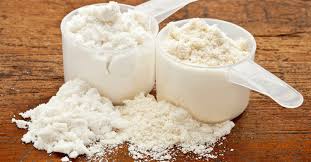
Protein concentrates, whether derived from animal or plant sources, provide high protein content. Protein concentrates and isolates are used in animal diets to meet nutritional requirements, especially where high-protein sources are needed.
Types of Protein Concentrates
1. Leaf Protein Concentrates (LPC): Prepared from herbaceous plants and legumes, these are high-yield protein sources but require supplementation due to deficiencies in essential amino acids like lysine and methionine.
2. Fish Protein Concentrates (FPC): Commonly used in cereal-based foods as a source of lysine, FPC is processed by grinding fish and separating liquids and solids through centrifugation.
3. Soy Protein Isolates (SPIs):
i. Soy protein isolate is a high-protein product containing about 90% protein. It is derived from defatted soy meal by removing most fats and carbohydrates.
ii. Soybeans are crushed into oil and defatted meal, with the meal primarily used as animal feed. A smaller portion is processed into soy-based food ingredients such as soy flour, protein concentrates, protein isolates, and textured proteins.
iii. Soy protein isolate is often blended with vitamins, minerals, and flavoring agents for use in protein shake powders.
iv. The process of producing soy protein isolate includes solubilizing protein and carbohydrates in neutral or alkaline pH, recovering the solubilized protein, separating, washing, neutralizing, and drying.
Three steps involved in SPI processing:
i. Soy flakes are slurried in alkaline water (pH 6.8–10) to dissolve proteins and oligosaccharides. The protein solution is separated from the insoluble residue by centrifugation.
ii. The protein solution is acidified to pH 4.5 using hydrochloric acid (HCl), causing the protein to precipitate as curd.
iii. The protein is neutralized to a pH of 6.5–7.0, rediluted, and either spray dried or packed for distribution.
4. Soy Protein Concentrates: Soy protein concentrate is made from dehulled, defatted soybean meal, with protein concentration achieved by removing soluble non-protein compounds.
Three main processes for production:
i. Aqueous Alcohol Wash Process: Defatted soy flakes are treated with alcohol (methanol, ethanol, or isopropyl alcohol) to remove sugars, while the alcohol is recovered for reuse.
ii. Acid-Wash Process: Soy protein is acidified to pH 4.2 to dissolve sugars without using solvents.
iii. Water Extraction Process with Heat Denaturation: Defatted soy meal is heat treated and extracted with hot water to remove sugars.
5. Whey Protein Concentrates
i. Whey protein concentrate (WPC) is obtained by removing non-protein constituents from pasteurized whey, resulting in a product with over 25% protein.
ii. WPC is produced using precipitation, filtration, or dialysis. Its acidity can be adjusted using pH-adjusting ingredients.
Roughage
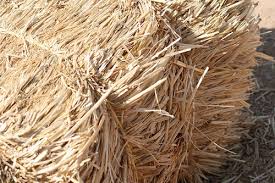
Roughages are plant-based feedstuffs high in fiber, crucial for the diet of herbivores. Roughages can be classified into two types based on moisture content: dry roughages (10-15% moisture) and green or succulent roughages (60-90% moisture).
Types include pasture, hay, silage, crop residues, and by-products. Roughages provide essential nutrients like protein, minerals, and vitamins. The nutritional content varies, with legumes having higher protein content (up to 20%) and others like straw having much lower levels (3-4%).
Roughages play a crucial role in maintaining the gastrointestinal (GI) tract’s efficiency, especially in ruminants. They contain fibrous carbohydrates such as cellulose and hemicellulose, which are primarily present in plant cell walls. Effective digestion of roughages requires microbial enzymes, especially in ruminants where roughages contribute significantly to the diet.
Agro-industrial By-products
1. Cotton By-Products: Cottonseed cake is a by-product of oil extraction from cottonseeds. Production in West Africa has decreased since 2004. Burkina Faso, Mali, and Benin are the leading producers.
2. Soybean Cake: Increasing in importance in West Africa due to declining cotton production, soybean cake is a valuable by-product from oil extraction.
3. Groundnut Cake: Senegal leads in groundnut production within UEMOA, producing about 2.5 million tonnes of groundnut cake in 2009.
4. Local Cereal Bran: Sorghum and millet are the primary sources of cereal bran in West Africa, with significant production in Sahelian countries.
5. Molasses: A by-product of sugar cane processing, molasses is widely produced in Côte d’Ivoire and Senegal, accounting for about 60% of total regional production. Molasses production remains stable at around 100,000 tonnes per year in the UEMOA region.
Do you have any questions, suggestions, or contributions? If so, please feel free to use the comment box below to share your thoughts. We also encourage you to kindly share this information with others who might benefit from it. Since we can’t reach everyone at once, we truly appreciate your help in spreading the word. Thank you so much for your support and for sharing!
Read Also: Microbiological Examination of Food

